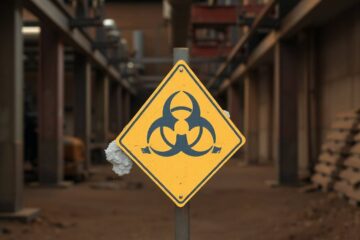Emergencies can happen at any time, and it is crucial for workplaces to have a plan in place to respond effectively and efficiently. This is especially important in Australia, where the country’s unique climate and landscape make it vulnerable to various emergencies such as bushfires, floods, cyclones, and heatwaves. It is essential for employers to prioritise the safety and well-being of their employees by implementing effective emergency response strategies.
In this article, we will discuss some effective emergency response strategies for Australian workplaces. These strategies are not only applicable to businesses but can also be applied in schools and any other workplace setting.
What are some emergencies that my business might face?
Before delving into the emergency response strategies, it is essential to understand the different types of emergencies that a business may face. These include:
- Natural Disasters – As mentioned earlier, Australia is prone to natural disasters such as bushfires, floods, cyclones, and heatwaves.
- Medical Emergencies – This can range from minor incidents like cuts and bruises to major events like heart attacks or strokes.
- Fire Emergencies – These can be caused by faulty electrical equipment, gas leaks, or even human error.
- Criminal Activities – This can include theft, violence, or other criminal acts that may occur in the workplace.
Now that we have identified some potential emergencies let’s discuss the strategies you can implement to respond effectively.
It is essential to have a plan in place for each type of emergency, as the response and procedures may vary.
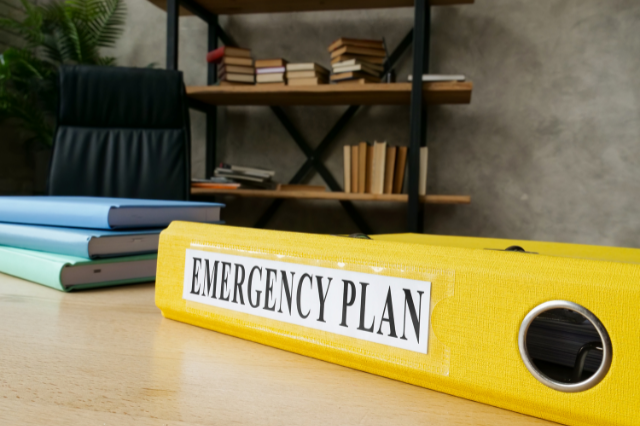
What does the law say about Emergency Response Strategies?
Each state has different legislation that outline specific requirements for emergency preparedness, including the provision of first aid equipment and training, evacuation procedures, and designated safety officers.
It is crucial for employers to comply with these regulations and ensure the safety of their employees in case of an emergency.
Generally , employers have a legal duty of care to provide a safe work environment for their employees which includes foreseeable events. Meaning if your business is in a bushfire zone, you must have measures in place to protect your employees from potential fires. You can’t pretend you didn’t know.
Having tried and trusted effective emergency response strategies in place can ensure you, your employees and your business are prepared.
14 Effective Emergency Response Strategies for Australian Workplaces
This is not an exhaustive list and it may vary depending on your business size and location. However, these emergency response strategies can serve as a starting point for your business’s emergency response plan.
1. Develop an Emergency Response Plan
The first step in preparing for an emergency is to develop an Emergency Response Plan. This plan should outline the procedures and protocols to be followed in the event of an emergency. It should include evacuation routes, designated assembly points, emergency contact numbers, and roles and responsibilities of employees during an emergency. The plan should also be regularly reviewed and updated to ensure its effectiveness.
Often businesses think they are small so don’t need one, but every company regardless of its size needs an Emergency Response Plan. It could make all the difference in protecting your employees and minimising damage to property.
When developing an Emergency Response Plan, it is essential to involve all employees and provide proper training on how to implement the plan. This will ensure that everyone is aware of their roles and responsibilities, leading to a more coordinated response in case of an emergency.
If you work in a mobile business, such as a construction site or delivery service, it is crucial to have a mobile response plan that can be easily accessed and implemented on the go. This might include having emergency supplies, contact numbers readily available in company vehicles and clear communication protocols.
An emergency response plan isn’t just an evacuation plan; it is about how to identify an emergency and how to respond quickly and efficiently.
2. Conduct Regular Drills and Training
It is essential to conduct regular emergency drills and training for all employees. This will help them familiarise themselves with the Emergency Response Plan and understand their roles and responsibilities during an emergency. Regular training and drills also ensure that employees are prepared and can react quickly in case of an actual emergency.
Ensure that the drills are realistic and cover various scenarios. It is also crucial to review and evaluate the drills regularly to identify any weaknesses in the plan and make necessary adjustments.
Training should also include first aid and CPR training. Having employees trained in these skills can be life-saving during medical emergencies and can also help in building a culture of safety within the workplace.
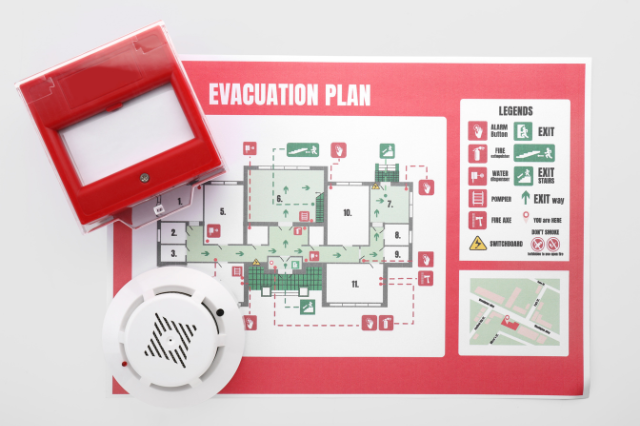
3. Educate Employees on Emergency Procedures
Along with regular drills and training, it is crucial to educate employees on emergency procedures. This includes knowing how to operate fire extinguishers, first aid equipment, and other emergency tools. Employees should also be aware of the different types of emergencies that can occur in their workplace and know the appropriate response for each. Education should start as soon as a worker joins the company and should be reinforced on a regular basis.
Emergency response procedures can be discussed during toolbox talks or incorporated into safety meetings. This will ensure that employees are always aware of the procedures and can respond accordingly in case of an emergency.
4. Utilise Technology
Technology has significantly advanced emergency response capabilities. Employers should take advantage of this by implementing technology-based solutions such as emergency notification systems, GPS tracking for mobile workers, and remote monitoring systems.
Emergency notification systems, such as text messaging and automated phone calls, can quickly alert employees in case of an emergency. GPS tracking allows employers to locate their mobile workers in real-time during an emergency.
Remote monitoring systems can be used to monitor workplace conditions such as air quality, temperature, and other environmental factors that could pose a threat to employee safety. This information can then be used to make informed decisions during an emergency.
5. Have Emergency Equipment and Supplies
Having emergency equipment and supplies on hand can make a significant difference during an emergency. This includes first aid kits, flashlights, batteries, and backup power supplies.
It is vital to regularly check and maintain this equipment to ensure it is in good working condition. In case of a medical emergency, having trained first aid responders on-site can also be beneficial.
If your business is at higher risk of having an emergency incident because of it’s location or the type of work you do, you should consider having additional emergency response equipment and supplies on hand.

6. Establish Communication Protocols
Effective communication is crucial during an emergency to ensure quick response and coordination. It is essential to establish clear communication protocols for employees to follow in case of an emergency. This can include having designated personnel responsible for communicating with emergency services and other employees.
Communication protocols should also include a system for providing updates and instructions during the emergency, ensuring that everyone is aware of what is happening and what actions they need to take.
It is also important that workers feel confident enough to make decisions such as calling emergency services in case of an emergency. This can only be achieved through proper training and education.
7. Utilise Local Resources
In Australia, there are various resources available to help businesses prepare for emergencies, such as the Australian Red Cross and state emergency services. Employers should take advantage of these resources and reach out for assistance in developing an Emergency Response Plan or conducting emergency drills.
Local emergency services can also provide valuable information about potential hazards in the area and how to prepare for them. Building a relationship with these resources can be beneficial in case of an actual emergency as they can provide support and guidance during the response.
8. Develop a Business Continuity Plan
In addition to an Emergency Response Plan, it is crucial to have a business continuity plan in place. This plan outlines how the business will continue operations during and after an emergency, ensuring minimal disruption to the business and its employees.
The continuity plan should include backup procedures for critical systems such as IT, communication, and financial systems. It is also essential to have a designated location for employees to work from if their workplace is inaccessible due to the emergency.
9. Identify Potential Hazards
Identifying potential hazards in the workplace can help prevent emergencies or minimise their impact. This can include conducting regular risk assessments and addressing any potential hazards promptly.
For example, if your workplace is in an area prone to bushfires, it is crucial to have a fire management plan in place, such as clearing vegetation around the building and having fire extinguishers readily available.
By identifying potential hazards and taking preventative measures, you can reduce the likelihood of an emergency occurring in the workplace.
10. Consider Employee Needs
During an emergency, it is essential to consider the specific needs of employees. This could include individuals with disabilities or medical conditions that may require special assistance during an evacuation. It is essential to have a plan in place to ensure these needs are met and accounted for. You should also consider whether you have clients or customers on site who may also require assistance during an emergency.
It is crucial to include diverse perspectives in the development of your Emergency Response Plan and consider factors such as language barriers or cultural differences. This will help ensure that all employees feel included, supported, and able to respond effectively during an emergency.
Emergencies can happen at any time, and it is essential for Australian workplaces to be prepared.
11. Have an Emergency Contact List
A comprehensive emergency contact list is essential for any workplace. This list should include emergency services, such as the police and fire department, as well as contact information for all employees in case of an emergency. The list should be easily accessible to all employees and regularly updated.
12. Implement Safety Measures
Prevention is always better than cure. Employers should take necessary safety measures to minimise the risk of emergencies in the workplace. This can include installing fire alarms and sprinkler systems, conducting regular maintenance checks on equipment, and providing personal protective equipment to employees.
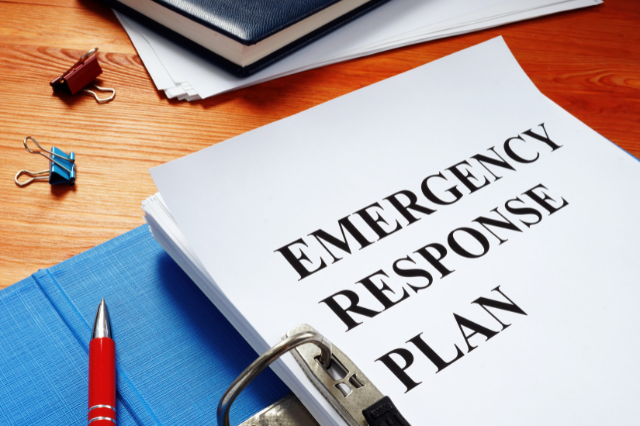
13. Assign Emergency Response Team
Having a designated emergency response team is crucial for any workplace. These individuals should be trained to handle different types of emergencies and have clear roles and responsibilities during an emergency. They should also be responsible for coordinating with emergency services and ensuring the safety of all employees.
Ensure that this team receives regular training and conducts emergency drills to ensure they are prepared to handle any situation effectively. It is also important to have backup members in case a designated team member is not available during an emergency.
If there are specific emergencies predicted such as bushfires or cyclones the response team should meet immediately to discuss the plan of action. They should also regularly review and update the Emergency Response Plan to account for any changes in the workplace or potential hazards.
14. Provide Psychological Support
Emergencies can be traumatic for individuals, and it is essential to provide psychological support to employees after an emergency. Employers should have a plan in place to offer counselling services and other forms of support for those who may need it.
Business owners are required by law to not only consider their workers physical safety but also their psychological well-being. This includes providing a safe and supportive work environment and offering support services during and after an emergency.
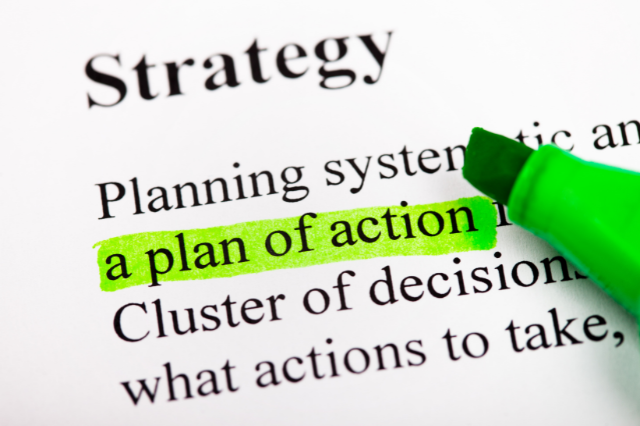
Emergency Response Strategies Toolbox Talk
To ensure all employees are aware of the Emergency Response Plan and understand their roles and responsibilities, it is essential to conduct regular emergency response strategies toolbox talks. These talks provide an opportunity to discuss emergency procedures, review safety measures, and address any concerns or questions from employees.
During these toolbox talks, employers should also stress the importance of reporting potential hazards in the workplace and practising emergency drills. By having open communication and involving employees in the development and review of the Emergency Response Plan, businesses can create a culture of safety and preparedness.
What should be included in an Emergency Response Strategies Toolbox Talk?
A toolbox talk on emergency response strategies should cover the following key points:
- Introduction: Start by introducing the topic and its importance in ensuring the safety of employees and the workplace.
- Overview of Emergency Response Plan: Provide a brief overview of the Emergency Response Plan, including its purpose and how it will be implemented during an emergency.
- Potential Hazards: Discuss the potential hazards in the workplace and how to identify and report them.
- Employee Needs: Emphasise the importance of considering employee needs during an emergency, such as individuals with disabilities or language barriers.
- Emergency Contact List: Remind employees of the emergency contact list and its availability for easy access.
- Safety Measures: Discuss any safety measures that are in place to prevent emergencies and ensure employee safety.
- Emergency Response Team: Introduce the designated emergency response team and their roles and responsibilities during an emergency.
- Psychological Support: Remind employees of the available support services in case of a traumatic event.
- Practice and Preparation: Stress the importance of practising emergency drills and being prepared for potential emergencies.
- Q&A: Allow time for employees to ask questions and address any concerns they may have about the Emergency Response Plan.
Remember, regular toolbox talks are essential for reinforcing emergency response strategies and ensuring all employees are prepared in case of an emergency. By following these effective strategies, Australian workplaces can create a safe and secure environment for their employees and minimise the risk of emergencies. Remember, it is better to be prepared and not need it than to need it and not be prepared. So take the time to review and update your Emergency Response Plan regularly and conduct regular toolbox talks to ensure everyone is on the same page when it comes to emergency procedures.
How often should an Emergency Response Strategy Toolbox Talk be held?
Toolbox talks on emergency response strategies should be held regularly, at least yearly, to ensure all employees are up-to-date with the Emergency Response Plan and their roles and responsibilities during an emergency. It is also important to conduct additional toolbox talks if there are any changes or updates to the plan or in case of potential hazards predicted for the workplace.
Conclusion
In conclusion, emergencies are unpredictable, but with proper planning and preparation, workplaces can effectively respond to them. By following these seven effective strategies, employers can ensure the safety and well-being of their employees during an emergency in the Australian workplace. Remember, it is better to be over-prepared than underprepared when it comes to emergencies. Stay safe!


